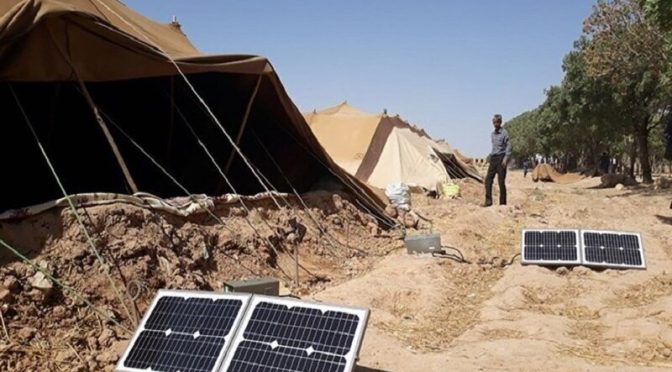Renewable sources generated more than 230 million kilowatt hours of electricity, an increase of 21 percent in comparison with a month earlier.
Wind power plants held the lion’s share of the rise in the production of electricity by renewable sources.
The installed capacity of electricity generation by renewables is around 1.2 gigawatts.
Based on the Energy Ministry data, renewables, currently, account for nearly seven percent of the country’s total electricity generation capacity.
Of the country’s total renewable capacity, 44 percent is the share of solar power plants while the share of wind farms stands at 40 percent and small-scalded hydropower plants generate 13 percent of the total renewable capacity.
The head of the Nomads Affairs Organization of Iran said in June that more than 20,000 solar panel sets have been distributed among the country’s nomadic households over the past 2.5 years, IRNA reported.
According to Shayan Naderi, the number of solar panel sets provided to nomadic households across the country increased from 700 sets in August 2021 when the current government took office has reached 20,480 sets.
Knowledge-based and indigenized technologies are used in carrying out this project. The government pays 90 percent of the costs of each system. Solar panels are used to easily provide electricity in far-off places. It is not only clean but also cheap and limitless.
Solar-powered photovoltaic panels convert the sun’s rays into electricity by exciting electrons in silicon cells using the photons of light from the sun, which is the cleanest, most reliable form of renewable energy, and can be used in several forms to help generate electricity along with income.
Back in October 2019, the energy ministry announced the implementation of a program for supplying the country’s nomadic households with mobile small-scale power stations.
Iran’s Planning and Budget Organization (PBO) inked a memorandum of understanding in November 2019 with Imam Khomeini Relief Foundation and the Organization for Mobilization of the Oppressed for the construction of 20,000 photovoltaic power stations (known as PV systems) across the country.
According to the Deputy Head of PBO, Hamid Pour-Mohammad, the project was part of a bigger program in which in the first phase 20,000 PV systems would be constructed for rural and nomadic households, and in the next phases, the number will be raised to 100,000 stations.
The latest statistics released in a report on “Statistical Review of the Global Energy” show that Iran generated 382.9 terawatts/hour of electricity in 2023, registering a 4.3 percent hike compared to a year earlier.
Iran generated more than 367.1 terawatts/hour of electricity in 2022.
The growth of Iran’s generation of electricity in 2023 was nearly twice that of the average growth of the generation of electricity in the world.
The report put the total generation of electricity worldwide in 2023 at more than 29,924 terawatts/hours, which was 2.5 percent higher than a year earlier.
Iran’s generation of electricity in 2023 exceeded that of industrialized countries like the UK, Italy, and Spain as well as Turkey, Algeria, Egypt, Indonesia, Pakistan, and Thailand, the report added.
